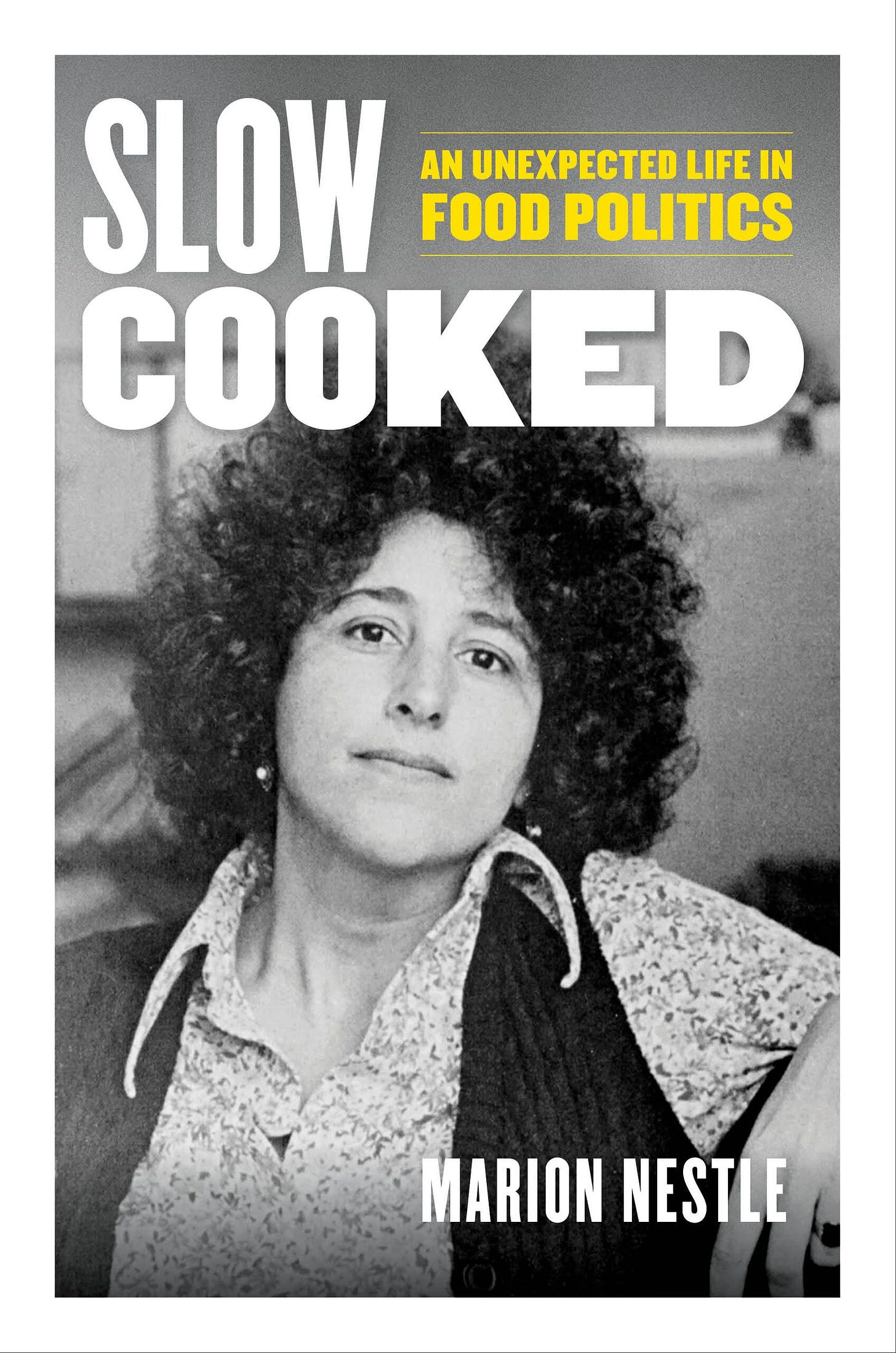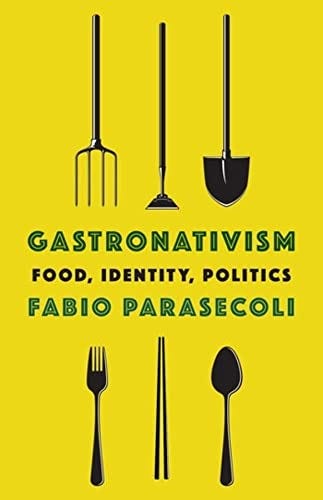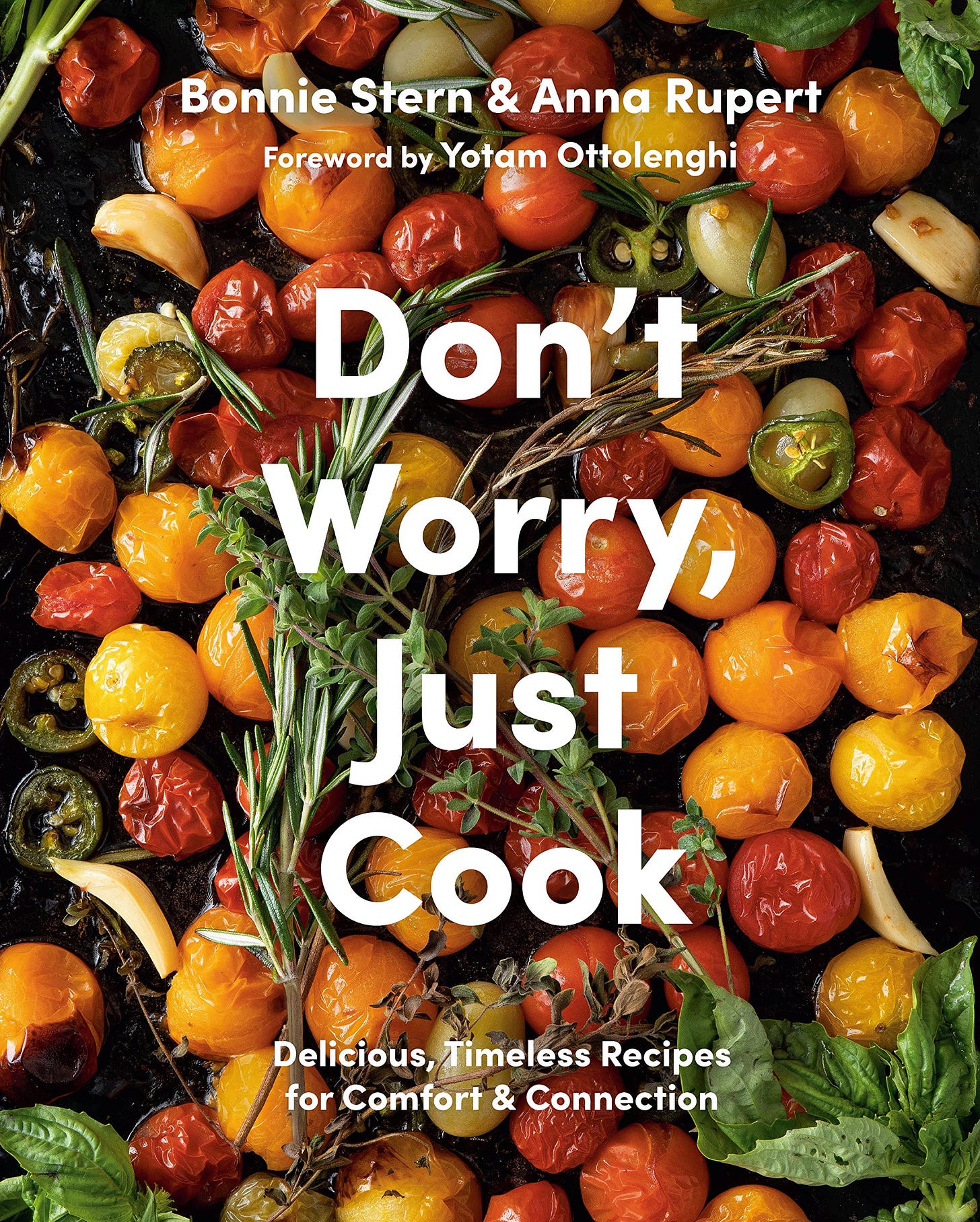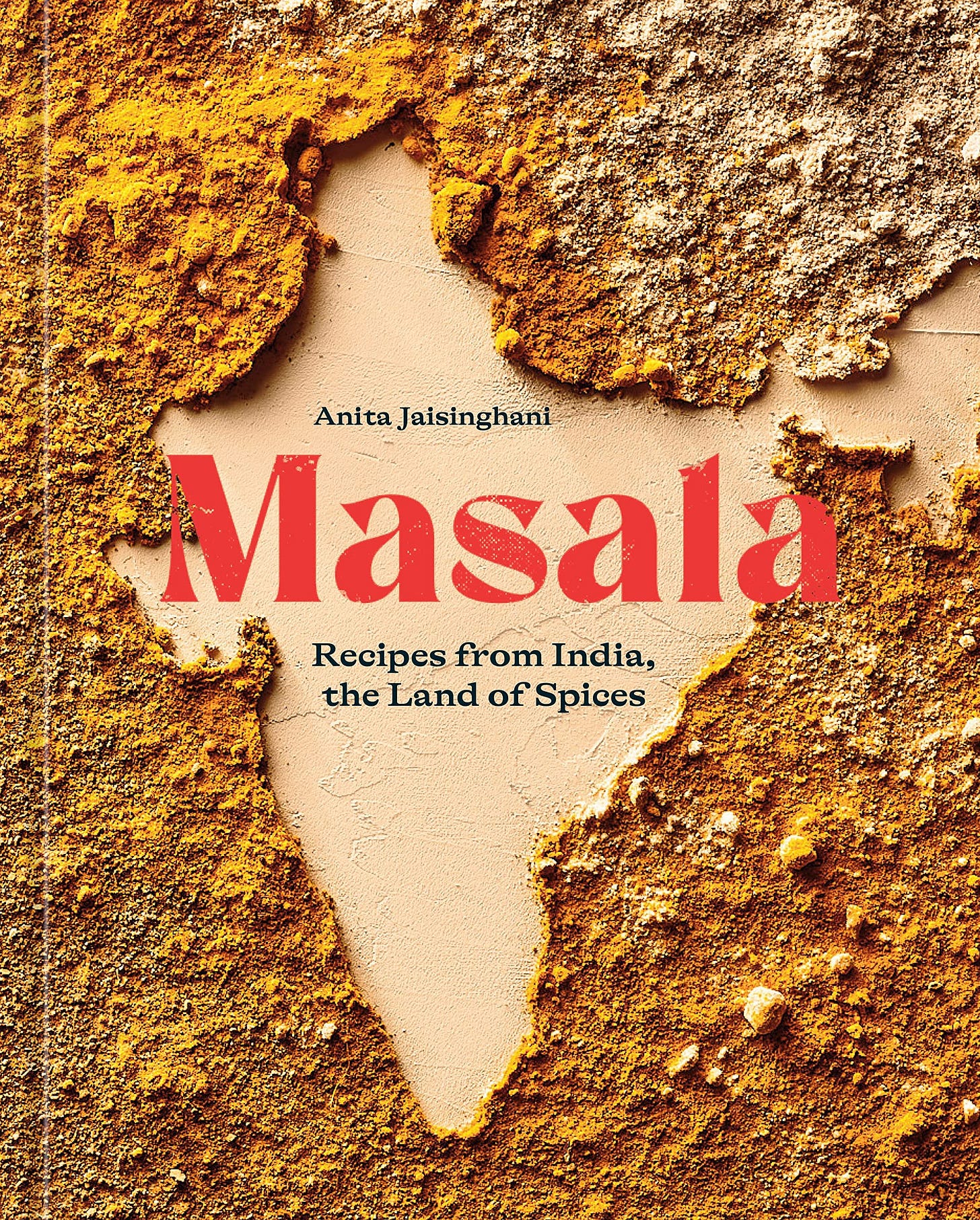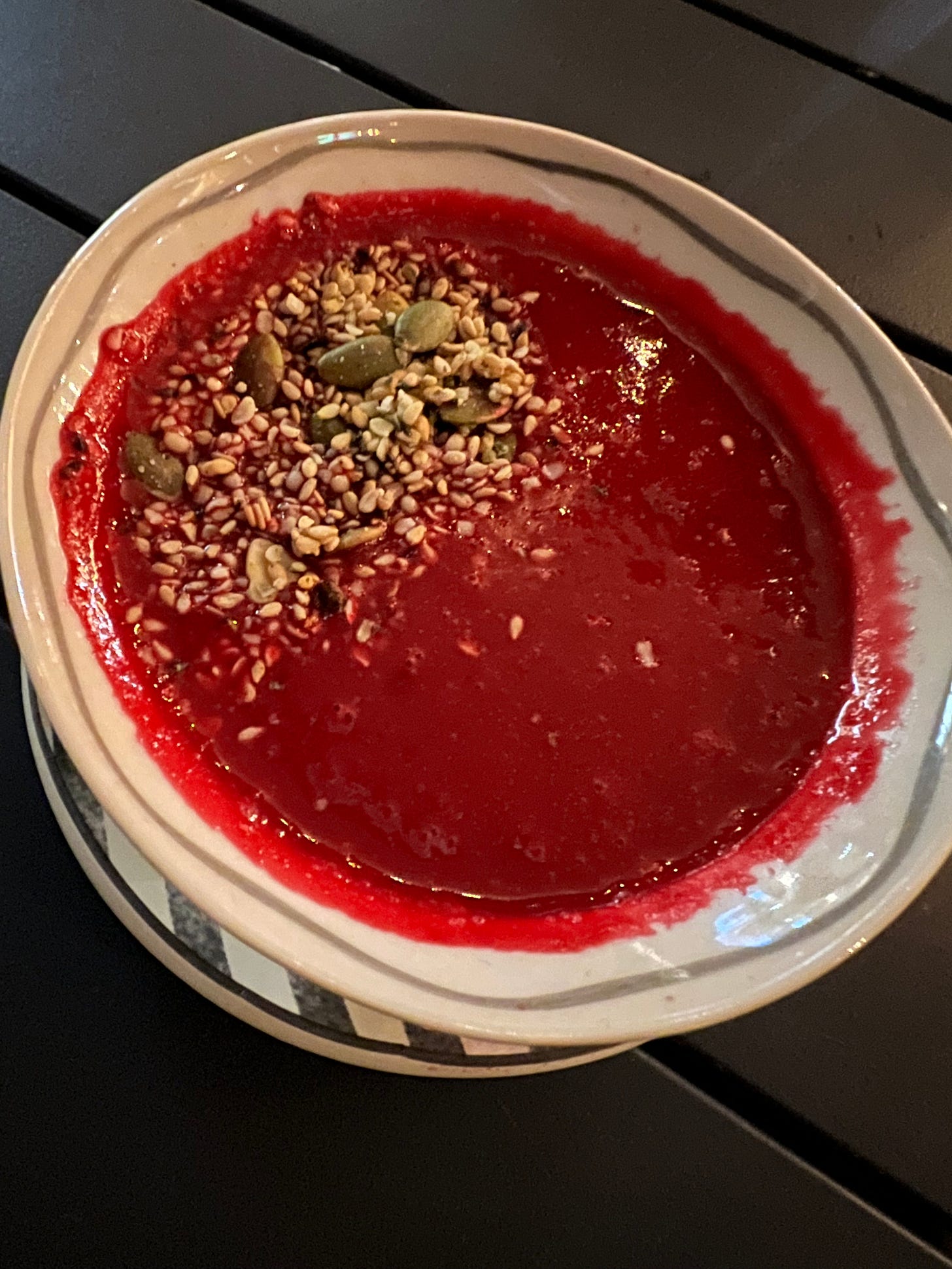Issue #71: Fall Reading List with Recipes
New Books by Friends, Recipes for Green Rice and a (Vegan) Beet Soup for the Season
Today is Yom Kippur, the highest of holy days on the Jewish calendar, marked by observant Jews with a 24-hour fast to atone for one’s sins. It’s a curious day to be sending a newsletter about food. Fortunately, today’s topic veers more toward reading about food than eating it.
Between workload and travel schedule, it feels like the first normal fall since COVID-19 set in. And yet, despite Biden’s proclamation of the end of the pandemic, friends and friends of friends are still falling to the virus that just won’t go away. A new variant? Life moving indoors? Who knows why. What is normal, anyway? I was the only one wearing a mask on recent flights to and from Texas last week, so who’s the odd one out? And, speaking of normalcy and Texas, I’ll be on tenterhooks until the election in November, anyway. Luckily there is reading and cooking to keep me focused and sane. (Writing and knitting help, too.)
To imagine an alternative reality, you might want to dig into the work of Carolyn Steel, a British architect turned food philosopher, whose concept of sitopia proposes a world in which our lives, our cities, and our socio-economic relationships are organized around food. This is the way things use to be, but hers is not a regressive vision. In fact, it is a thoroughly contemporary take on how to live a satisfying life in the modern world. She is my guest on the current edition of my What’s Burning podcast. Have a listen. Thank you, as always, for your continued support. —Mitchell
Chillier weather, earlier sunsets, and a few long-haul flights have helped me make some progress on the pile of books I mean to read growing on my nightstand. Their number had doubled recently, as several friends and colleagues clearly took the time afforded by pandemic lockdowns to focus on writing. Over the last few weeks, I’ve read and cooked my way through a fascinating collection of memoir, cookbooks, and geopolitical expositions about food. Here are a few I highly recommend.
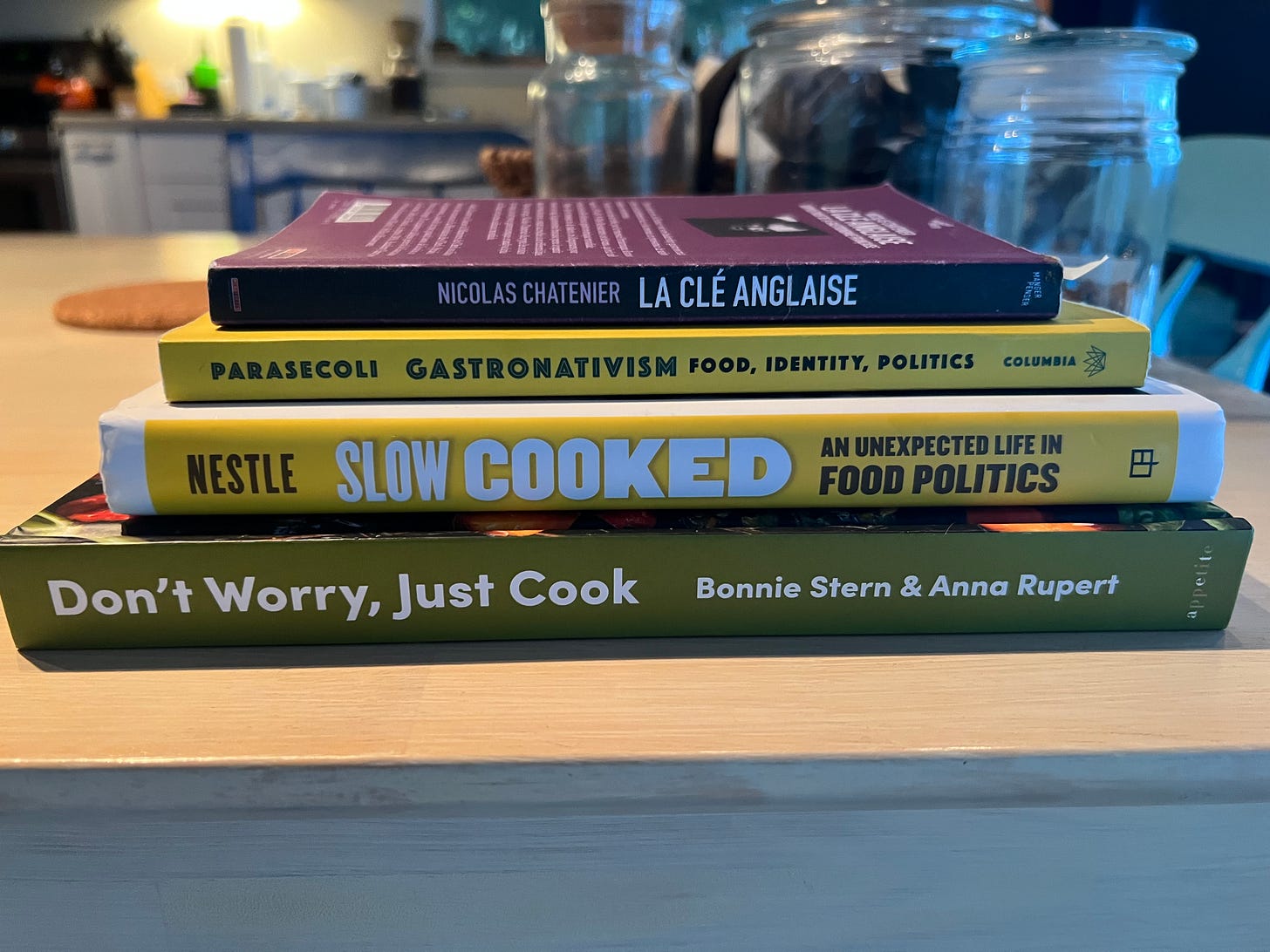
I realize that you may consider this list biased because, as I’ve already noted, the books I’m including are all written by people I know well. You will find my name in the pages and acknowledgments of several of them. In defense of this list, all I can say is that I’m a harsh critic, who proffers the most substantive feedback to those I know best because I want help them realize their potential. If I didn’t think these books would make you smarter about food and/or improve your cooking, I would have just transferred them to my give-away pile, which also grows by the week.
As you begin thinking about what to give as gifts for the holidays, you should consider buying any or all of these books for the people you know who love food, whether they prefer to cook, eat, or read about it. Each nourishes in a different way.
Slow Cooked: An Unexpected Life in Food Politics by Marion Nestle
I first met Marion Nestle in 1993. She tracked me down after reading an op-ed I had written in Art Culinaire, the hard-cover, quarterly chef magazine for which I was executive editor at the time. In that piece, I challenged chefs to take more responsibility for the healthfulness and sustainability of the food they cooked and served to their clientele. I know now from reading her memoir that at the same time the pieces of her big-picture vision of the socio-economic components of food, nutrition, and public health were coalescing in her work. Our first encounter would prove life changing.
Marion put my name on an invitation list for an extraordinary Oldways Preservation & Trust olive-oil junket to Tunisia that set off that December, on which I would meet many lifelong friends and colleagues. She later invited me to join a New York University advisory committee she was assembling to create the first full-fledged, degree-granting department devoted to Food Studies, into whose first class of Ph.D. students I would later enroll. Her memoir fills in the backstory of these times.
Our personal and professional lives have been intertwined ever since, to the point that now that we rent a house on the opposite shore of Cayuga Lake from where she and her partner Mal Nesheim also have a home. We meet regularly for ice cream, winery hopping, and kayaking on the lake. We catch up on the food news of the day on our four-plus hour drives to and from the city. Milo prefers Marion’s lap to almost any other. During our time together on the road, Nate, Milo, and I heard a lot about the challenges of writing a memoir, which requires both personal and professional reflection that can oftentimes be uncomfortable. Having devoured the informative and inspiring book, I can now tell Marion it was worth the effort. She describes the gist of her story in the conclusion:
In a sense, this book is a case study of the particular barriers faced and dealt with by one woman growing up in post-World War II America…low expectations—familial and societal, adopted as my own—along with institutional biases, lack of mentorship, and the demands of family and child care, which are always greater for women…In another sense, my life illustrates the profound advantages that became available to women, at least those who were white, at that precise—and now understood to be unique—moment in history.
Gastronativism: Food, Identity, Politics by Fabio Parasecoli
Fabio Parasecoli is a professor in the Food Studies department that Marion created at NYU. He and I first got to know each other when Lisa Sasson—a nutritionist in the same department, whom, like Fabio and me, Marion recruited—and I were co-teaching a course on the Mediterranean diet and Italian food culture at NYU’s spectacular Villa la Pietra campus in Florence, Italy. A native of Rome, Fabio is a polymath and polyglot with one of the broadest and deepest perspectives on global food culture of anyone I know. Each year Fabio gave our students a crash course on Italian food history and culture and accompanied us on our various tours around the country. He was always a student favorite. He could explain almost any subject about food in a captivating way, drawing on his encyclopedic knowledge and his personal experiences living in China, in America, and in many parts in between.
Fabio’s new book draws on his experience and the work he has done over the years related to the geopolitics of food, geographic food designations, culinary diplomacy, social justice, pop and material culture, and other related subjects. Gastronativism posits an answer to a conundrum that has puzzled me for some time, that is, how to reconcile the identity politics and rhetoric of the local food movement with the rising tide of populism and xenophobia. It is a tricky because, as Fabio explains:
In its embrace of food as identity anchorage and ideological tool, gastronativism reflects a variety of political positions and reactions ranging from defense of local agrobiodiversity to distrust of foreign and unfamiliar products, at times with isolationist undertones. Its protagonists often adopt bottom-up, grassroots strategies, regardless of their political goals, displaying a gamut of attitudes from the staunchest conservativism to the most iconoclastic progressivism.
La Clé Anglaise: Géopolitique de la Gastronomie Française by Nicolas Chatenier
Homing in on a subset of gastronativism Fabio explores, my former World’s 50 Best Academy Chair colleague Nicolas Chatenier has written a wake-up call for French gastronomes to notice how the world around them has changed. By comparing the social-media-savvy, outward-oriented World’s 50 Best ranking of the top restaurants in the world with the secretive, Franco-centric model of Michelin, Nicolas, paints a picture of a French gastronomy that, after centuries of dominance, hasn’t really noticed many items on the menu have been 86ed. So many culinary cultures—Spain, Denmark, Peru, Korea—have evolved to innovate and create in ways that challenge the hegemony of French cuisine itself. Over long meals, Nicolas and I have had many conversations about the divergent trajectories of gastronomy in France, the U.S., and elsewhere. This book, structured mostly as an interview of Nicolas by Laurent Seminal, represents Nicolas’s vast knowledge of the history of French cuisine and his vast experience eating around the world.
According to Nicolas, if French cuisine continues to favor la technique over l’artistique, l’ingrédient over l’imaginaire, la tradition over l’Innovation, it will never be able to reclaim its place as the global leader of gastronomy. I wonder if his compatriots and colleagues are listening.
Don’t Worry, Just Cook: Delicious, Timeless Recipe for Comfort and Connection by Bonnie Stern and Anna Rupert
It’s hard to think of a time that Bonnie Stern and her family didn’t feel like an extension of my own family. Although I knew about Bonnie, her cooking school, her cookbooks, and especially her “Milk Calendar,” (which came free every year as an insert in the Toronto Star) while I was growing up in Toronto, it wasn’t until I had invited the talented and idiosyncratic Toronto chef Susur Lee to come cook at the James Beard Foundation in the early 1990s that I met Bonnie in person. In the Beard House kitchen after Susur’s dinner, I overheard Bonnie mention her sister’s cottage near Kinmount, Ontario, a tiny town northeast of Toronto, where my sister also also had a cottage. We started chatting. We first met over dinner at my sister’s cottage in Kinmount, of all places. We became fast friends, our families and our friendship growing closer over the years.
That Bonnie and her daughter Anna have written a cookbook, and not just any cookbook, but a gorgeous coffee-table-worthy book full of mouth-watering recipes you can’t help but want to make and eat, is simultaneously the most natural and most-hard-to-believe thing in the world. This was how they spent their time in isolation during lockdown, which I know because I was there on Zoom and iMessage during much of it. Their trials and tribulations navigating the already complicated process of writing a book while dealing with strict COVID protocols and the general sense of fear during those early days is a testament to the power of the title, Don’t Worry, Just Cook.
Bonnie and I share the feeling that it isn’t difficult and shouldn’t be intimidating for anyone to get in the kitchen and make delicious things for themselves, their families, and their friends—the raison d’être of this newsletter. We also share the belief that the reward of satisfaction and love that comes from the effort are worth overcoming any fear you might have.
RECIPE: Janna’s Green Rice
Israeli author and food expert Janna Gur is a mutual friend of Bonnie’s and mine. I’ll save the story of the first time we had this rice at a shabbat dinner at Janna’s home in Tel Aviv for you when you by the book. Let’s just say it’s a simple, fragrant, and delicious dish that characterizes so much of the wonderful food in Israel. And if I didn’t relinquish my fidelity to our GPS on our way there, we never would have had it.

(Serves 8)
3 tablespoons extra-virgin olive oil
1 large onion, finely chopped
6 cardamom pods, lightly crushed
½ teaspoon ground cumin
3 cups basmati rice, rinsed and drained 2 or 3 times until the water runs clear
1 cup chopped fresh cilantro
1 cup chopped fresh dill
1 cup chopped flat-lef parsley
2 teaspoon kosher salt
¼ teaspoon freshly ground black pepper
4 ½ cups boiling water
3 tablespoons butter
Heat the olive oil in a large, heavy-bottomed saucepan over medium heat. Add the chopped onion and sauté until golden brown, about 10 minutes. Add the cardamom pods and cumin and cook for another minute or more, until fragrant. Add the rinsed and drained rice and stir for about 2 minutes, until the grains are evenly coated with the onions and oil.
Stir in about half of the chopped cilantro, dill, and parsley, along with the salt, pepper, and boiling water. Bring back up to a boil and cook over medium heat until the water is absorbed down to the surface of the rice, 5 to 8 minutes. Lower the heat, cover, and simmer for an additional 10 minutes. Remove from the heat, but keep covered while the rice rests for another 10 minutes or so.
Life the lid and remove and discard the cardamom pods, which will have risen to the surface. Fluff the rice, stirring in in the remaining herbs and butter, being careful not to break the long grains.
Masala: Recipes from India, the Land of Spices by Anita Jaisinghani
My friend and former colleague Peggy Gordinsky first introduced me to Anita Jaisinghani, a chef Peggy had come to know during her post–James Beard Foundation tenure as food editor of the Houston Chronicle. Anita was planning to open a New York outpost of her popular Houston Pondicheri restaurant, and she wanted some advice from a local. Anita and I met for coffee. She told me of her plans to replicate the success she had in Houston with her vibrant, Indian-inflected, all-day café and restaurant. It was a tall order. I cautioned her that New York wasn’t always kind to people from other places. Pondicheri New York became one of Nate’s and my favorite spots.
Fast forward ten years. Pondicheri New York is gone, but the Houston original has never been busier. I was at the bright, beautiful, bustling café and restaurant for the first time last week. Along with Paul Newnham of the Chefs’ Manifesto, I was helping Anita gather chefs interested in promoting more sustainable restaurant practices—everything from serving less meat (a Texas-sized challenge if ever there was one) to composting food waste.
Coincidentally, Anita’s first cookbook came out this fall, Masala, which like Bonnie and Anna’s book, has page after page of delicious recipes I want to run into the kitchen to make. I’ve already attempted a handful, and now that I’ve just eaten breakfast, lunch, and dinner in Pondicheri world, I intend to go back and make some more.
When I told Anita that I wanted to write about her beet soup, which I had made and loved at home, she said, first we must try it at the restaurant. We had it as part of an elaborate dinner. And I can attest her recipe produces a soup pretty much indistinguishably delicious from the original. It is rich and flavorful, while being completely vegan. It calls for a lot of ginger that blends into the complex flavor of the finished soup. This soup requires a strong blender to get to the right texture. And if I can offer any bigger suggestion than you should try it, it is that Nate, who dismisses the entire category of soup, which is not to his taste, asked for a second bowl.
RECIPE: Pondicheri’s Beet Soup
This creamy, vegan beet soup has a beguilingly complex flavor enhanced by the combination of coconut, ginger, and toasted chickpea flour.
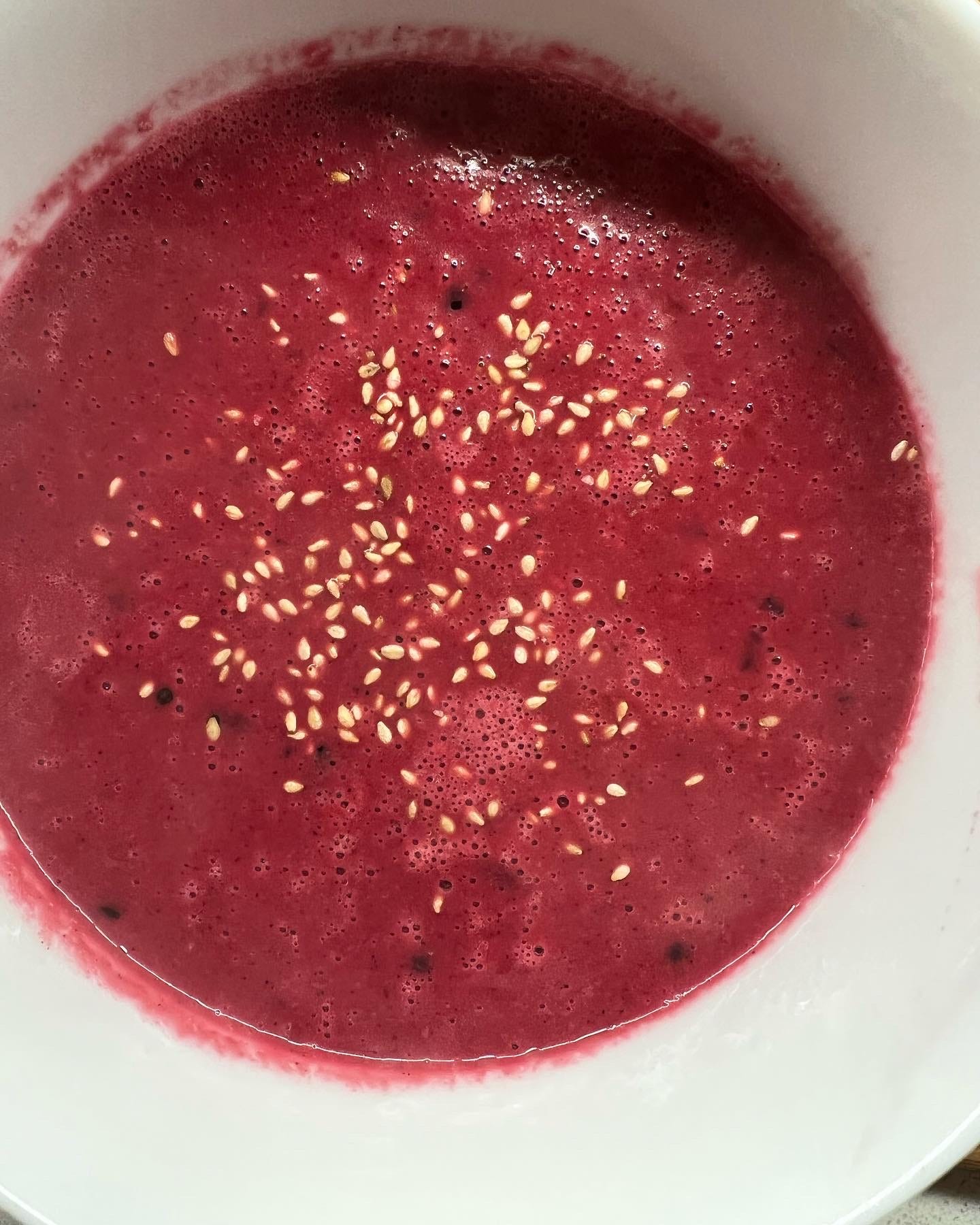
(Serves 4 to 6)
¼ cup plus 2 tablespoons coconut oil
¼ cup chickpea flour (aka besan)
3 or 4 beets (1 ½ pounds), peeled and cut into ½-inch cubes
3-inch piece ginger, unpeeled, sliced
1 teaspoon Kashmiri chili powder, or another mild, red chili
1 cup coconut milk, preferably fresh or frozen, but canned will do
2 teaspoons sea salt
1 teaspoon brown mustard seeds
20 or so fresh kari leaves (aka curry leaves)
1 tablespoon pumpkin seeds, toasted, for garnish
1 tablespoon sesame seeds, toasted, for garnish
Grated or chopped coconut, for garnish
Fresh herbs for garnish
In a large saucepan, heat the ¼ cup coconut oil over medium-high heat. Add the chickpea flour, lower the heat to medium, and cook, stirring frequently, for 4 to 5 minutes, until you have a golden brown roux that gives off a nutty aroma. Add the beets, ginger, chili powder, coconut milk, salt, and 3 to 4 cups of water, and turn up the heat to bring to a boil. Decrease the heat, cover, and simmer gently for 15 to 20 minutes, until the beets are cooked through. (Poke them with the tip of a knife to test.) Take care not to overcook the beets or they will lose their bright color. Turn off the heat and allow the soup to rest for a few minutes.
Transfer the soup to a powerful blender—here I love my Vitamix—and blend until super smooth. At this point the soup may be chilled and kept in the refrigerator for 2 to 3 days.) Return the soup to a saucepan and bring to a simmer, adding water if the soup is too thick.
To serve, in a small sauté pan, heat the remaining 2 tablepsoons of coconut oil over high heat. Add the mustard seeds and let cook until they start to pop, then turn off the heat and add the kari leaves to sizzle. Gently fold this mixture into the soup, scraping the pan with a spatula to get all the seasoned oil. Garnish with pumpkin seeds, sesame seeds, coconut and herbs, as desired.



